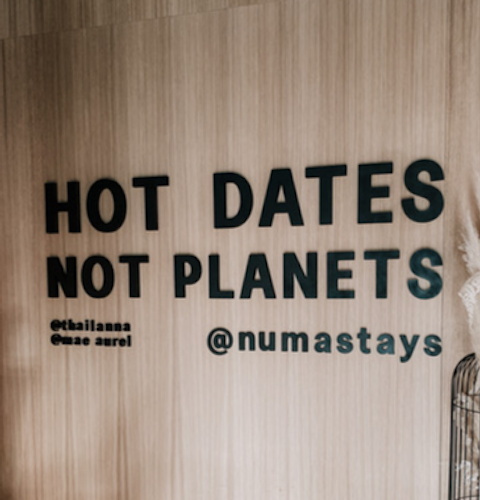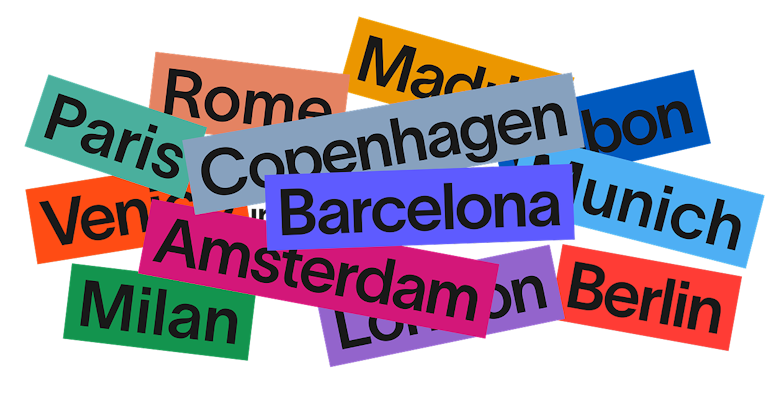
It’s Not Hip to be Square
Circular Design & the Future of Travel
06/2023 - Sahar Saini
Circular design helps point travel towards a regenerative and resilient future, a future where we design products, services and systems with the bigger picture in mind. A future where we zoom in on user needs while zooming out to consider the system in which we are creating. A future where we unlock a new frontier of creativity to address global challenges at their root!
What’s a circular economy?
We’re so glad you asked, but we’re going to get technical real quick. So our current economic model relies on what’s called linear economy, which essentially means that it creates, consumes and disposes of products. However, this isn’t sustainable (obviously). It puts a ton of pressure on limited resources and generates significant waste and emissions. We needed another option, so researchers came up with the idea of a "circular economy" to act as an alternative!
This type of economy minimises waste and pollution, makes the most of resources by keeping products and materials in use as much as possible and recovers and regenerates products and materials at the end of each service life. In practice, we’re talking about reducing waste to a minimum. When a product reaches the end of its life, you keep its materials in the economy wherever possible, mostly through recycling. That way, you can use these things again and again, creating further value!
Let’s talk benefits
Why do we need to switch to a circular economy? Super easy: to protect the environment. We’re in a really decisive decade, particularly when you talk about meeting the objectives of the Sustainable Development Goals (SDGs), shifting the economy to achieve the aspirations of the Paris Agreement and achieving a fair economy that works for everyone. The collective enthusiasm to make a world where everyone can live a prosperous and dignified life within the planet's natural boundaries is at stake.
This decade is all about creating business strategies that stick and getting companies to move beyond basic sustainability strategies. We’re going to see the decade truly redefine business and the company's role in society, which will (hopefully) help them to navigate some massive changes and deliver some positive outcomes for the world. Classic business needs a change in attitude and mindset, but there are a ton of benefits from making this leap!
Moving towards a more circular economy would stimulate innovation, boost economic growth and create jobs. Redesigning materials and products for circular use would require new workers, new skill sets and new ways of thinking across many economic sectors. On the other hand, consumers would get more durable and innovative products that will increase their quality of life and save them money in the long term.
Designing the circle of life(time value)
As a society, we're not just designing products or even whole companies anymore—we’re now economic systems. We’re also not just designing for solitary users anymore. Instead, the stakeholders we have in mind are an intimately connected web of people spanning the globe. New tools like AI, the Internet of Things and biomimicry mean our design ambitions are limited only by our imagination.
At the same time, creativity's never been more important. The global economy is stuttering, and disruptive technologies challenge established business models. Creating more efficient and sustainable products from the start would help to reduce energy and resource consumption. Get this: it’s estimated that more than 80% of a product's environmental impact is determined during the design phase. That means that there’s a whole lot of good to be done at the drawing board!
Some really important choices are made in the design stage, including the definition of business models, material choices and the 2D or 3D aesthetics and functionality of elements. That’s not all—the design phase also includes the way designs will interact with people and systems along their journey, such as with logistics, collection and infrastructure systems.
In the case of physical products, designers also decide how different materials are combined and how easily they can be reused, repaired, refurbished, or disassembled. Screws or glues? Easily accessible or hard-to-reach? It's hard to reverse the impacts of design decisions once they are implemented. We can't unscramble an omelette.
Design decisions often lead to long-term investments that lock us into a certain model for years to come. We use circular design as a shorthand for the practice of applying circular economy principles at the design stage of everything. It’s a practice that embraces thinking on a systems-level (the real big picture) to tackle some of the biggest interconnected challenges we’re facing today.
Wood enters the ring
Okay, now you know what circular design is, how to go about it and what you (we/society/the world) gets out of it. Now let’s about how we (your friendly neighbourhood numa) are using circular design to lead the future of travel. We’ve got one word for you: Wood. No, not the classic building material used in everything from arks to attics. Well, yes, that as well. But we’re talking about our property named Wood, nestled at the crossroads between Vienna’s hippest districts.
Wood’s name is a bit of a spoiler for it’s radical design: the interior design is made entirely of sustainably sourced spruce trees. 1,500 (give or take a tree) of them! Each tree used during construction was replaced with one or two spruce seedlings just a few minutes away in Vienna's enchanting forest. We took a look around and noticed that sustainable design is becoming a driving force in the market, as both travellers and the travel industry attempt to reduce their carbon footprint. Wooden buildings provide a potential solution; they're made from renewable materials and they’re easier to insulate, meaning more energy is conserved in the long run. When our guests step off the Vienna streets and into our wooden oasis, they're greeted with furniture, artwork and touches of nature—all made entirely out of wood.
From Mosquitoes to Mountains
At numa, we believe in uniting the comfort of a private home and the delight of a boutique experience. Wood is a big, beautiful testament to our goal of becoming a more sustainable brand. The circular thinking doesn’t end when the building’s finished—our sustainable design extends from the building to the products we offer, like REN shampoo (which comes in reusable glass bottles) recycled paper and locally-sourced water, plus sustainably- and ethically-grown coffee and tea that come in zero-plastic packaging. Circular design could very well be the way of the future, and its comprehensive, holistic approach means that it’s the big acts as well as the small that will keep us travelling happy for the future!







